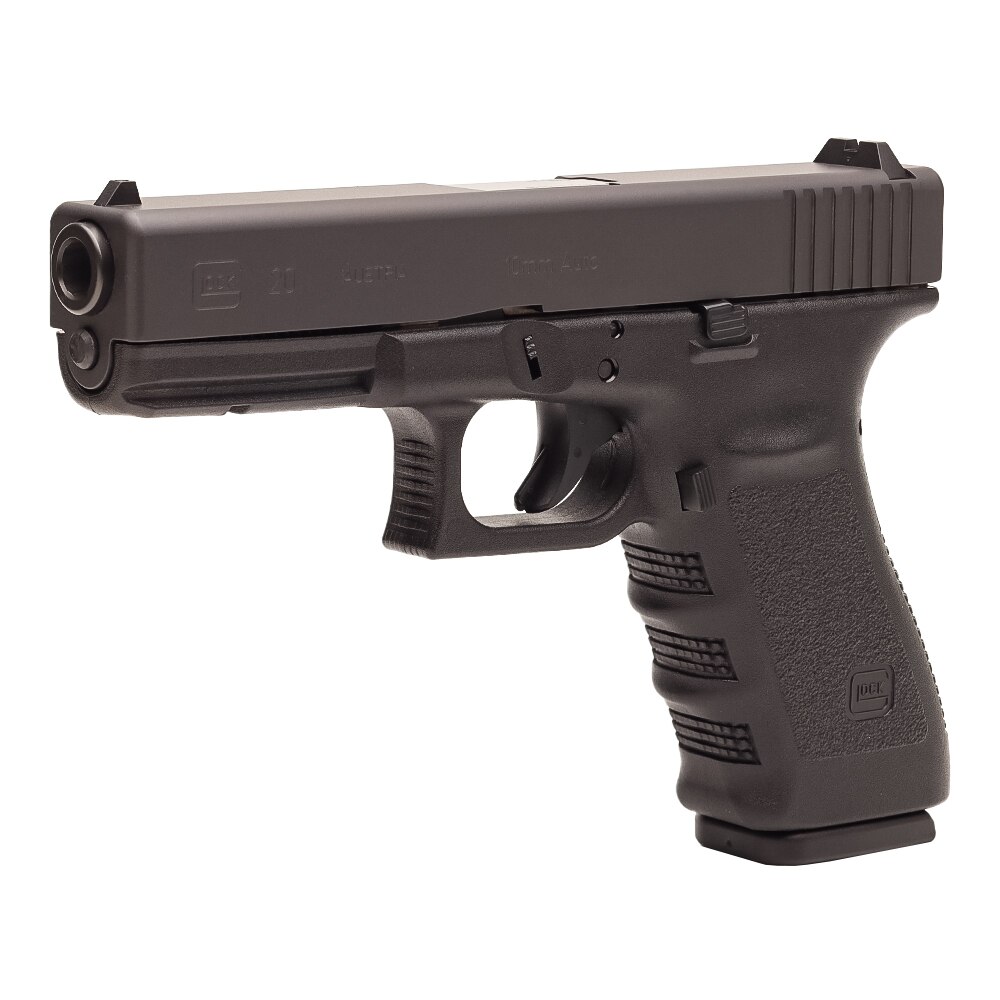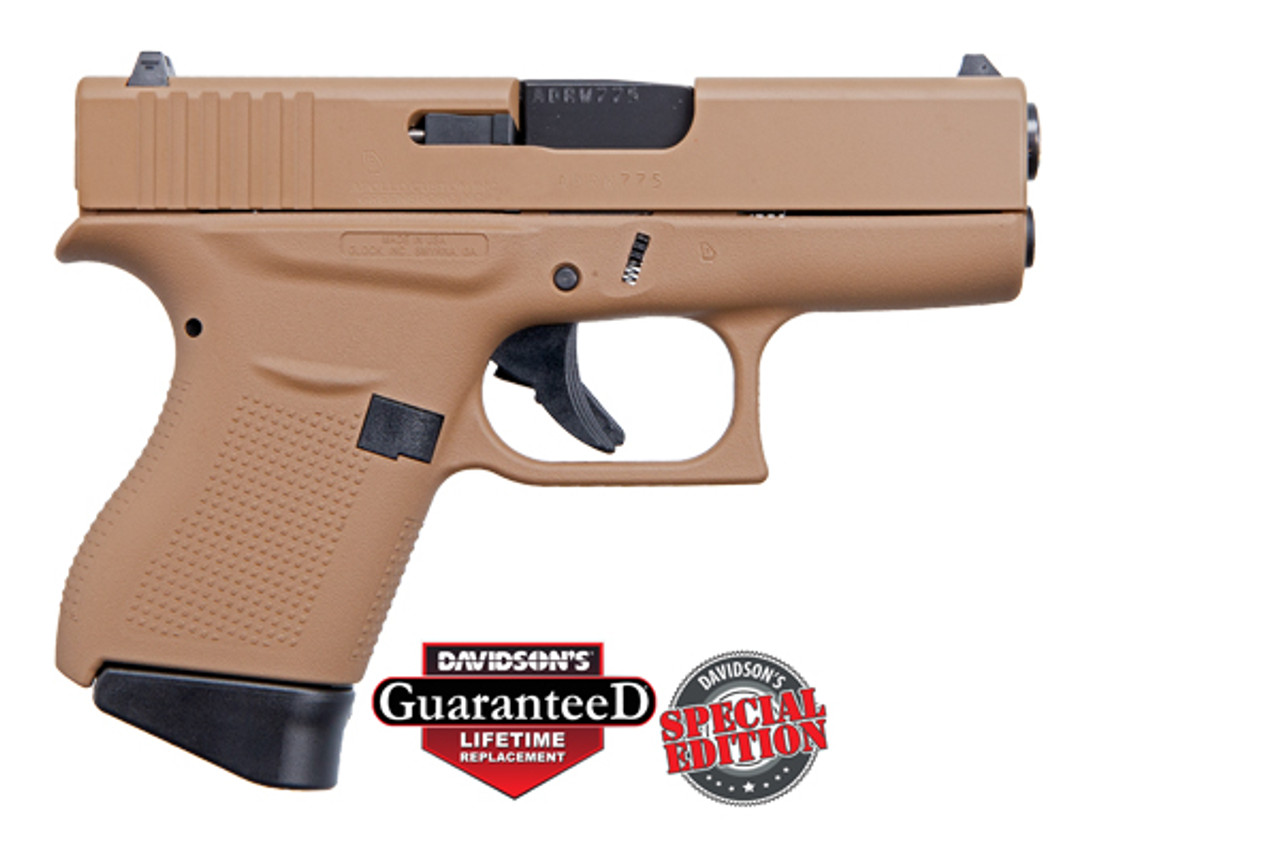9 Glock 10mm Barrel - A few years ago it was fashionable to see stories in handgun books about caliber conversions from one caliber to another. I think the king of these conversions is the 1911. I have shot the 1911 in .22, .30 Luger, 9mm, .38 Super, .40 S&W, 10mm, .400 Cor Bon, .41 Avenger, .45 ACP, . 44 Magnum as a single shot, .45 Super, and Rowland .460. Some conversion options are a gimmick and not worth the effort. If you're into that sort of thing, though, they're a nice diversion.
The Glock conversion is more practical. As an example, I recently picked up a good, used Glock Model 22 .40 S&W that was once a police gun. The gun was well used. Most were Glock trade-ins and some had been refurbished to some extent.
9 Glock 10mm Barrel

Maintenance depends on the agency and ranges from zero maintenance in many small departments to excellent maintenance in federal agencies. Most have spare magazines. I think a lot about the price - you might be better off buying a Gen 5 Glock. Unless you want a .40, and then there are no Gen 5 pistols.
Kkm Precision Barrels
As for myself, it didn't occur to me that all calibers are the same horse extraction and neither did you. The 9mm+P+ is a great police caliber and the 9mm+P is good, especially the new FBI approved Hornady Flex lock, but the .40 S&W hits harder. This is physics. I've taken deer in .40 and that's not something I'm comfortable with when it comes to 9mm.
Left to right: .40 S&W, 9mm and .22 LR. Having the ability to shoot all three from a single gun is a neat trick.
My gun was marked Atlanta PD. It is in very good condition and was in the box with the spare magazine and original grip inserts. One advantage was that the gun featured Glock night sights. Even though they are dark, the steel sights look much better than the standard Glock factory sights.
The trigger action is steady at 5.5 pounds. The stock shows some wear, and the cap and muzzle showed normal fire wear. While I love the .40 and its power, and have yet to find a job to own and shoot well, the 9mm is less expensive and plentiful. While the .40 isn't a heavy hitter, the 9mm cools less.
Sig Glock G20 Conversion Barrel
I got a 9mm conversion barrel. The .40's breech face is a bit larger and the extractor changes, so I was wondering how these conversion barrels might work. First, I tested the Glock with a number of .40 loads. These include the 155-grain Hornady XTP and the 180-grain XTP.
When more powerful loads are considered, the .40 caliber pistol is not only suitable for personal defense and service use, but is a good choice for animal defense. When it comes to wild dogs and big cats, I think the more powerful .40 caliber loads are good choices.
Next, I tried the conversion barrel. At first I used a mixed bag of ammo left over from other tests, including blanks and FMJ loads. I used 40 caliber magazines. Shot several hundred rounds, the gun was reliable enough for practice, but not for service use. Point of aim and impact was good for practice and recovery just under 0.40. Accuracy was at least equal to the Glock 17 9mm.

The magazines were fed the first 12 or 13 rounds, but the last two or three tended to be short. There is very little magazine spring force against cartridges in the last three rounds and we are using a 9mm pistol with a recoil spring set for .40. Switching to Glock 17 9mm magazines, the gun became better. Reliability has improved to about 95% to 98%, with cycle failures in the last cartridges common.
Mm & 10mm Run Circles Around 45acp In Every Dept.
This is a good conversion for practical use. The 9mm is economical, and with an affordable and accurate load like the 124-grain Fiocchi FMJ, the conversion barrel offers achievable practice. However, it is not a reliable service, while the Glock .40 as tested was 100% with all loads tested. Maybe a 9mm recoil mount with 9mm magazines would get it up to speed.
Next, I wanted to try the .22 caliber conversion unit. The Tactical Solutions .22 conversion unit is well made from good material and shows promise. The unit does not come with a spare magazine and I accept that the conversion was not made for tactical use. But I ordered a spare stock because I don't like to have equipment without a spare stock.
The conversion was installed in the Glock frame and the magazines were loaded with Fiocchi .22 Long Rifle High Velocity ammunition. Gun and conversion came to shoot. After 500 rounds of mixed ammunition—all high-velocity loads—the conversion never failed to feed, chamber, fire, or eject. I really like this. Accuracy is good, with the unit's practical accuracy just below par for a Glock 17 9mm pistol. Two inches at 15 yards or slightly better is average.
I had almost forgotten that I had a Bar Sto Precision barrel in .357 SIG. So this is really a four gauge Glock. However, I narrowed it down to three calibers for practical use, the .40 for defensive use, the .22 for training and practice, and the 9mm for center fire practice. Still, the .357 SIG is interesting.
Glock 34 Pistol Barrel
I loaded the .40 magazines with Fiocchi's .357 SIG FMJ load. The results were excellent. The function was 100%, and the absolute best accuracy of the test - because of the Bar Sto barrel. I shot a few groups with a Glock pistol under two inches at 25 yards, but I only shot the Bar Sto barrel and Fiocchi ammo that day.
22 caliber conversions are the first types of conversions and it is interesting to have a firearm that fires more than one round. Other weapons are useful and make life interesting. It should be noted that my Glock three gauge should get a lot of use.
Best pocket holster for glock 43, best iwb holster for glock 43, how much for glock 43, holster for glock 43 9mm, best ankle holster for glock 43, best concealed carry holster for glock 43, glock 43 holster for sale, glock 43 for wife, glock 43 holster for women, tagua holster for glock 43, holster for glock 43 with tlr 6, how much for a glock 43

0 Comments